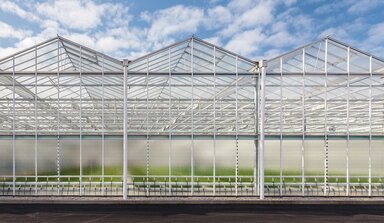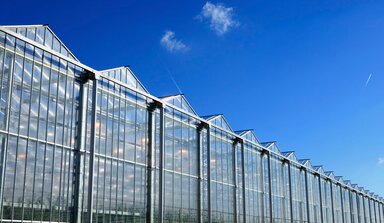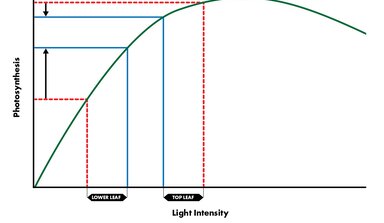ReduFuse produces more growth in generative crops
Diffuse light can contribute towards a better fruit quality and higher production. It’s mostly these results that are mentioned when research has been carried out on diffuse light through glass, a coating or a screen. What the research also shows, but where less attention has been paid up to now, is the change in crop growth due to diffuse light.
Diffuse coatings produce more growth in the crop
Certain greenhouse vegetable crops can remain quite generative early in the spring. This also applies to lit vegetable crops that are planted in September. The plant flowers high up in the top and the leaf or the internodes become shorter. The plant uses its assimilates for the production of fruits and less for crop growth. This can be undesirable. You want to avoid the plant becoming exhausted in the summer and as a result production falls and fruits are of lower quality during and after the summer. At that moment you try to get the crop to grow more, for example, by pruning tomato bunches so that they are shorter or by removing a whole bunch which is often at the expense of the total production. Experience has shown that generative crops grow more easily after applying ReduFuse to the roof. In addition, it remains possible (and is sensible) when using Redufuse to continue to grow generatively.
Controlling the temperature is important
It’s important during the period in which the diffuse coating is on the roof to monitor the temperature of the plant because it’s right here that you can feel the difference. The direct radiation from the sun is scattered by the diffuse effect of the coating. The difference is quickly a 3 to 5 degree drop in temperature at the top of the crop. Therefore you can imagine that by using the diffuse coating ReduFuse, the burning feeling experienced by the plant, fruit and of course the employee in the greenhouse disappears, simply because there is no direct radiation any more.
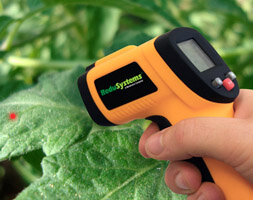 The temperature of plants and fruits that are under the sun’s direct radiation can rise considerably. Sweet peppers that are under the full sun can easily become 45°C which increases the chance of sunburn spots and sunscald. However, many users only check the greenhouse temperature shown by the sensor and there you hardly see any change. Therefore it is important to regularly measure the plant temperature.
The temperature of plants and fruits that are under the sun’s direct radiation can rise considerably. Sweet peppers that are under the full sun can easily become 45°C which increases the chance of sunburn spots and sunscald. However, many users only check the greenhouse temperature shown by the sensor and there you hardly see any change. Therefore it is important to regularly measure the plant temperature.
If you measure the plant temperature with an infrared handheld thermometer, hold it just a few centimetres away from the leaf so you are sure that you measure the temperature of the leaf only and not the surroundings. An infrared plant temperature sensor takes measurements in a cone shape and the further away you stand from the object the larger the surface area that is measured. Measure different leaves that are in a different position relative to the sun so that you get a good average indication. In addition it is wise to take measurements in the vicinity of the sensor because it’s this you want to make a comparison with.
Heat imaging technology for better results
In addition to measuring the temperature with a handheld infrared thermometer, you can also make accurate thermographic images of the crop and the greenhouse. The advantage of a thermographic image is that it visualises where the warm and cold spots are and it provides an average temperature for a large part of the crop.
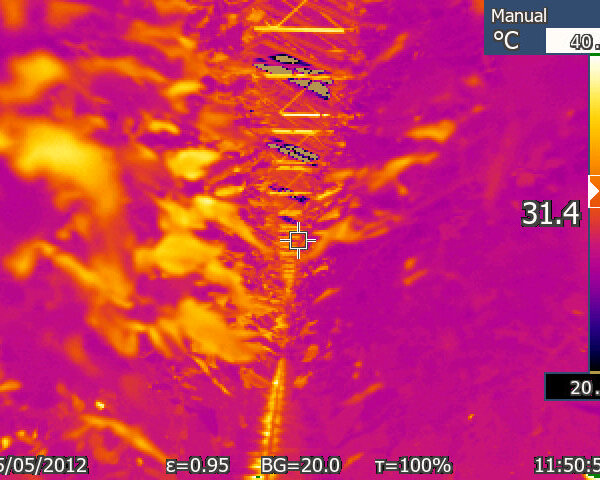
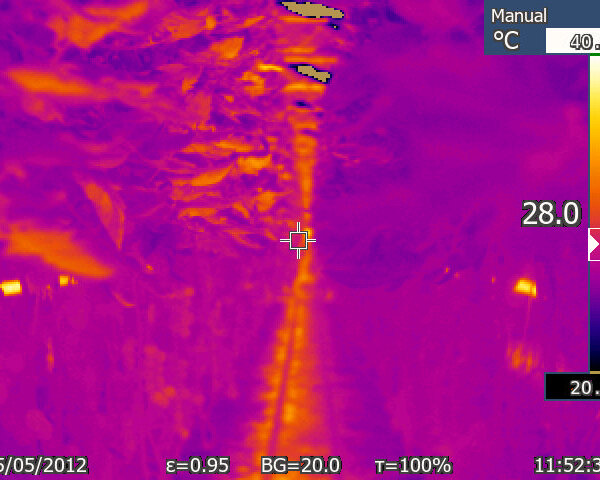
The advantage of measuring with an accurate heat image camera is that you can interpret all the important data better, so that this data can be used to optimise your greenhouse climate and crop. Mardenkro’s consultancy team now has such a heat image camera at its disposal. As a result they are even more able to provide appropriate advice.
